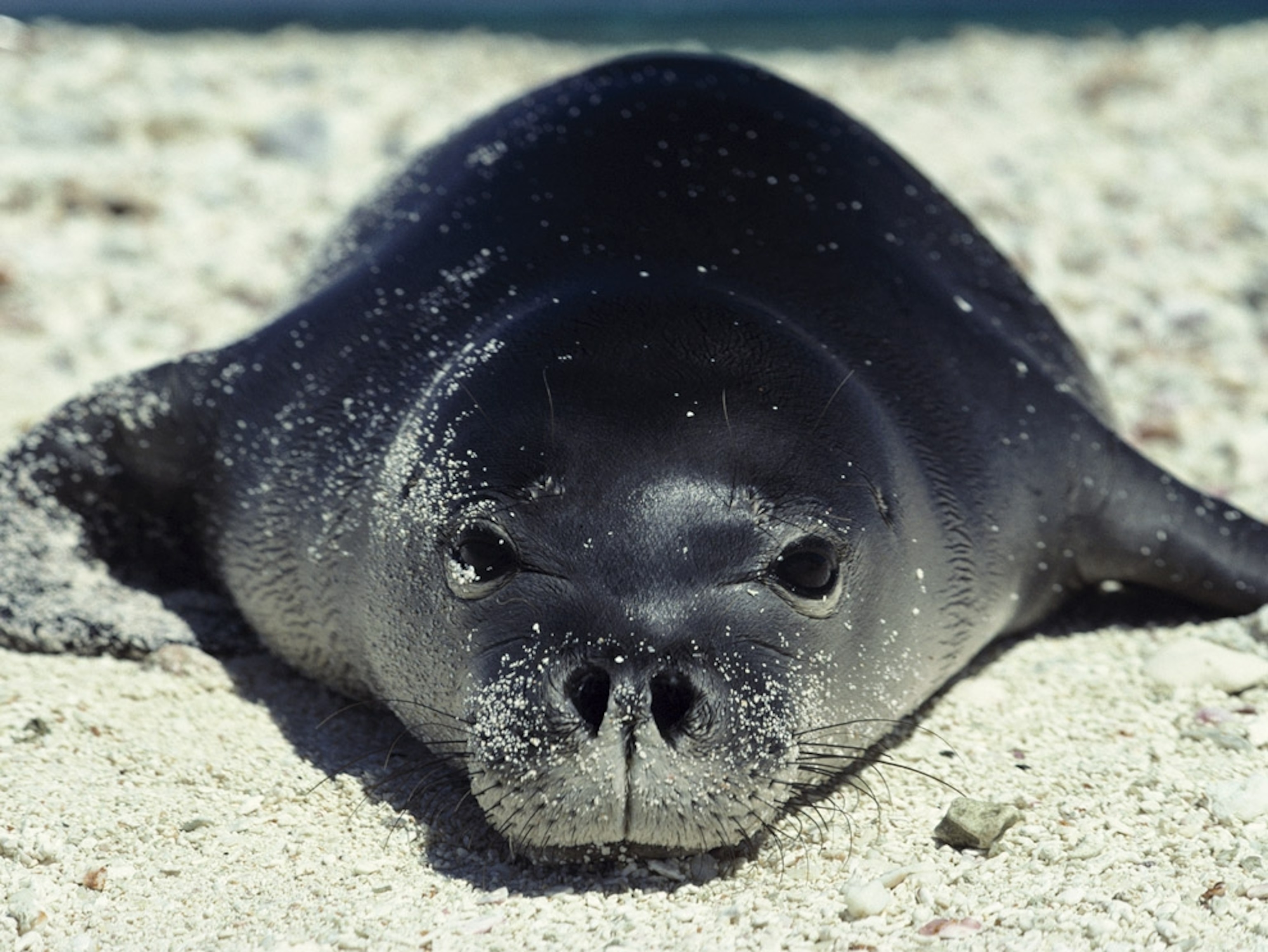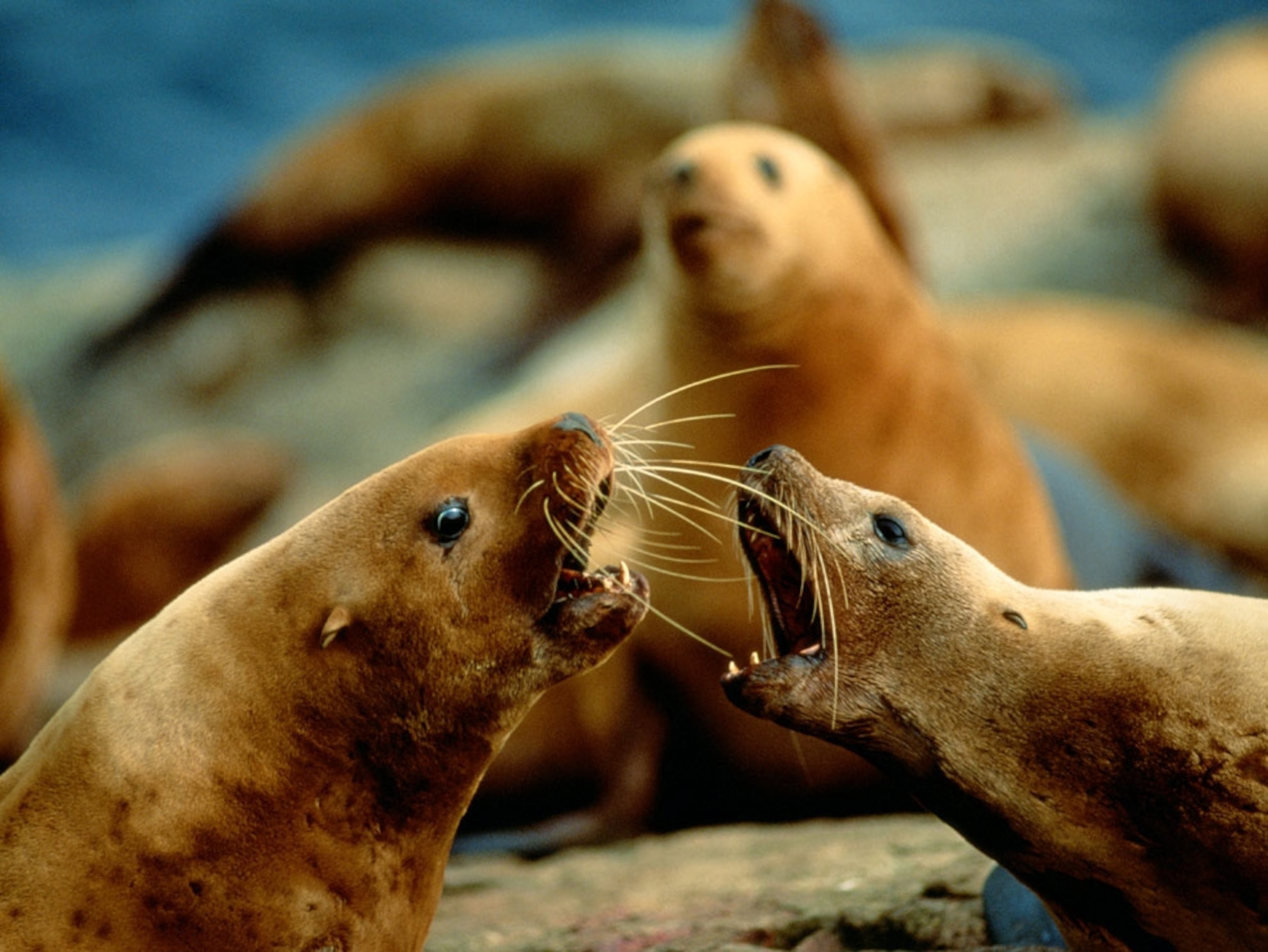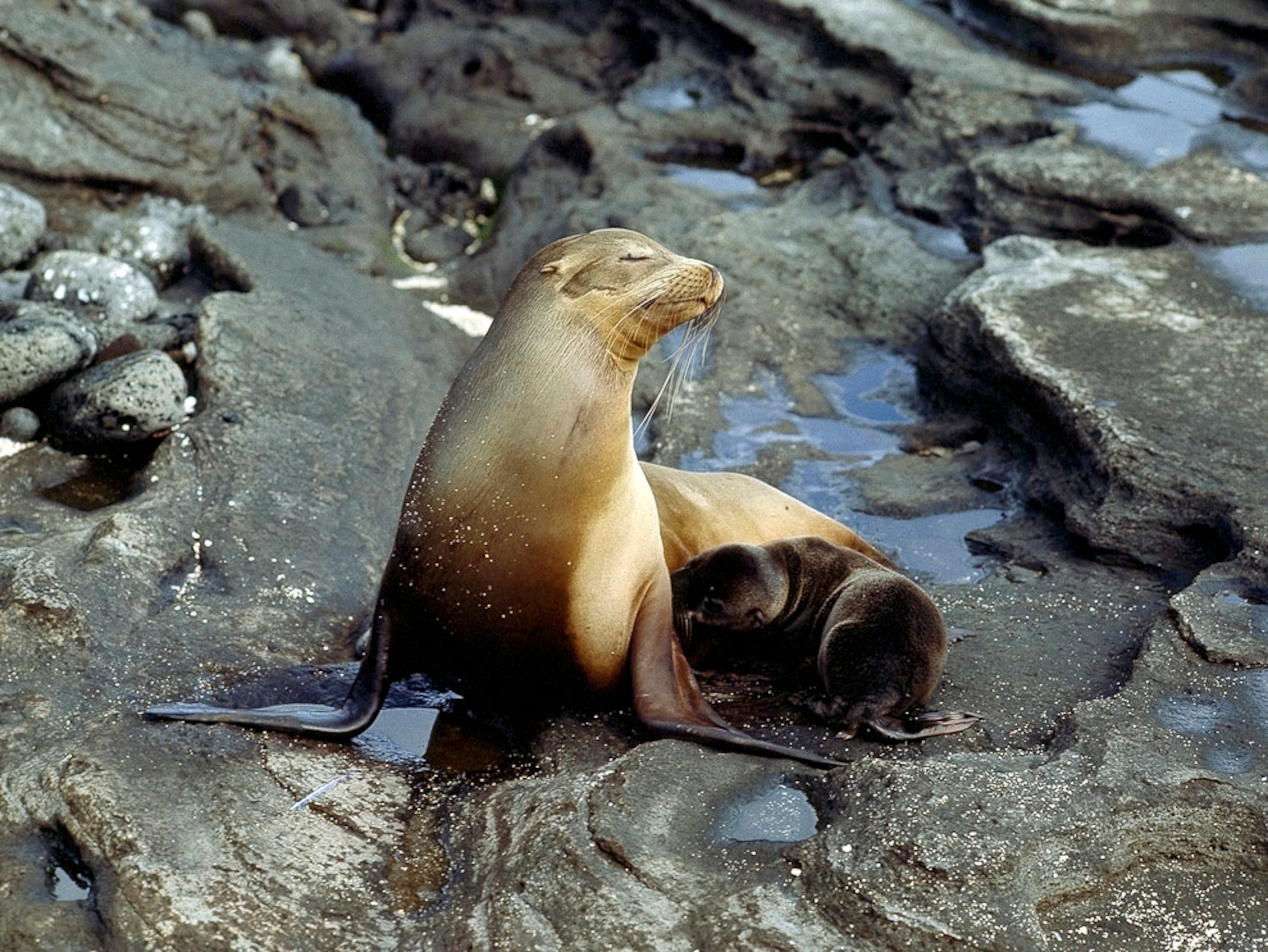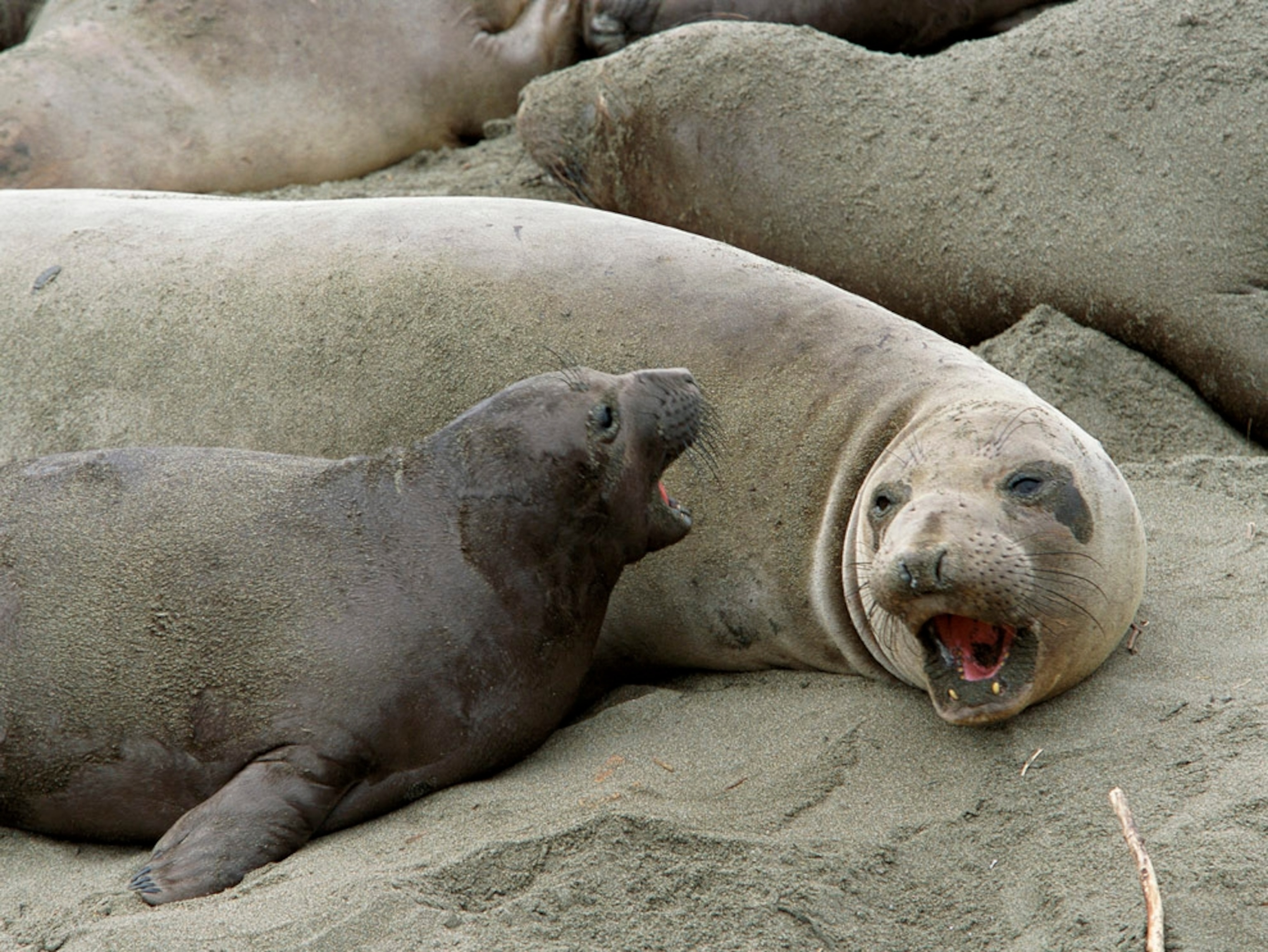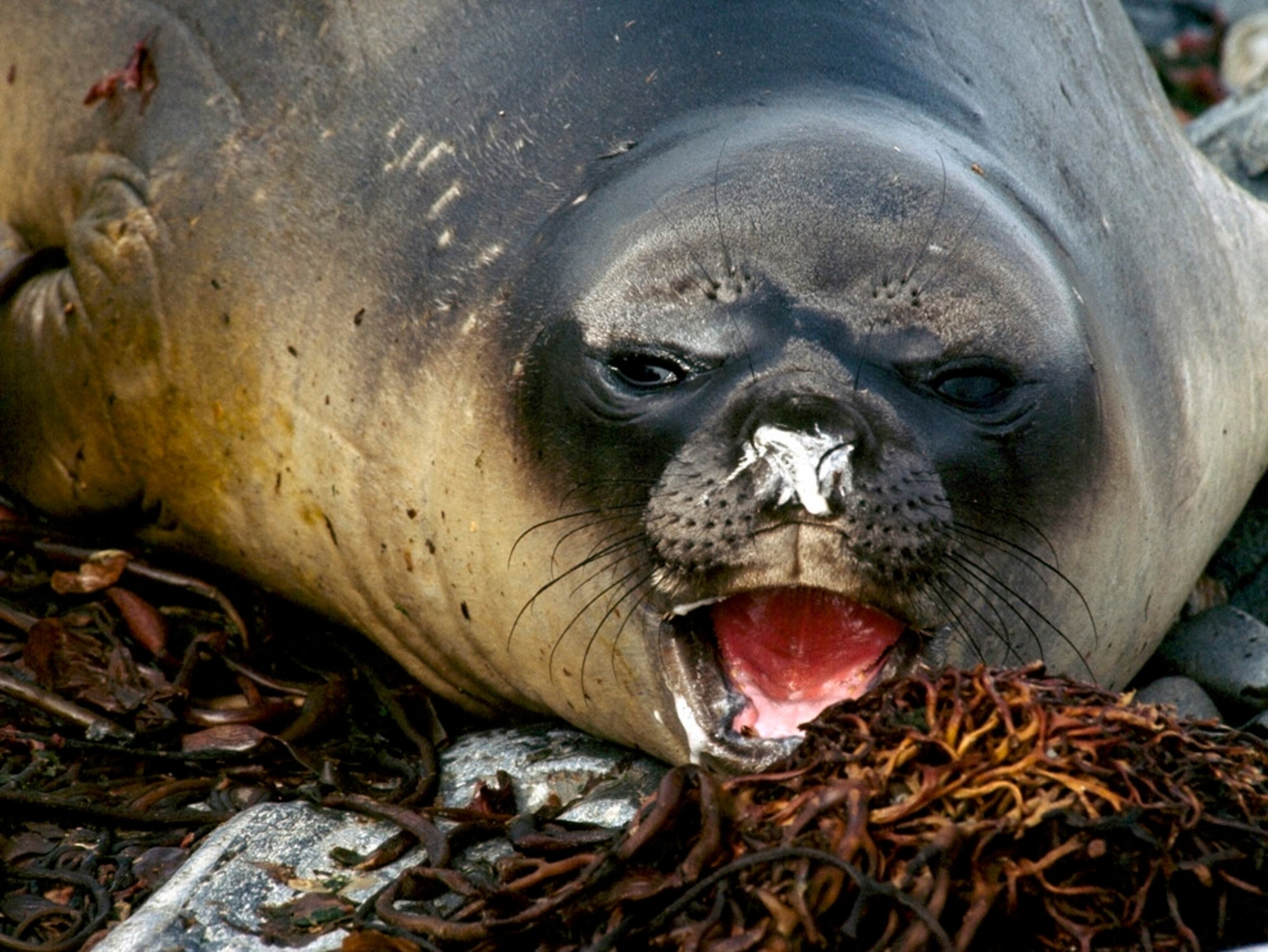Each December, more than 3,000 northern elephant seals haul themselves out of the frigid Pacific waters onto the shores of northern California’s Año Nuevo State Park.
For the mothers among them, it’s a race against time. The 1,500-pound animals have just one month to give birth, nurse their pups, and wean them before returning to the ocean to eat and rebuild their strength.
It’s an extremely brutal lifestyle, with many females producing just a few pups before dying. But according to a new analysis of a half-century of data on more than 7,700 northern elephant seal mothers, just a small proportion of long-lived “supermoms” are responsible for most pups in the colony. Some of these moms raised 17 pups in a lifetime of 23 years. (Read how animal mothers remind us a lot of our own.)
Such supermoms begin having babies slightly older than the average age of four—making them larger, healthier, and more experienced—and their babies are in turn robust and more likely to have pups of their own.
“This was a surprise to us,” says Burney Le Boeuf, an ecologist at the University of California, Santa Cruz, and senior author of the new study in the Canadian Journal of Zoology. “But it’s these reproducers that will determine the future of the colony.”
Northern elephant seals were almost wiped out by overhunting by the early 1900s, and understanding their population structure may inform scientists how they’re able to recover.
Live fast, die young
Le Boeuf and colleagues had noticed most of the females spotted at Año Nuevo were young—just a few years old. Because they made up the bulk of the population, the scientists believed that these mothers were responsible for most of the pups born in the colony. Their data, however, showed something completely different.
When the scientists factored in how many female pups survived long enough to mate and produce grandpups, the scientists realized that only 6 percent of the females gave birth to 10 or more pups, yet produced about 55 percent of the pups in the colony. Even a smaller proportion of these elephant seal supermoms—less than one percent of all females—produced up to 20 pups over their lifetime. (See photos of animal mothers and their babies.)
Now semi-retired, Le Boeuf has been studying this rookery of elephant seals since he first laid eyes on them as a newly minted professor at University of California, Santa Cruz, in 1967.
“I was amazed at what I saw. I was already writing a grant on the way back to campus,” says Le Boeuf, who became one of the first scientists to piece together the life history of a species that spends most of its time at sea. To track individual seals, Le Boeuf developed a colored plastic tag with a unique combination of numbers and letters that could be inserted harmlessly into the webbing of a hind flipper.
Initial data from the long-term project confirmed some hypotheses: Once females matured around age four, they generally began having one pup almost annually until they died. Some became mothers before age four, but they had to divert energy to their pregnancies that would normally go toward their own growth and development, meaning their pups were smaller and less likely to survive. Such young moms also had lower body weights and were more likely to die young. (See "These long-suffering animal mothers deserve a day too.")
More to love
Pup mortality is also high, due to predators, starvation, and abandonment—in the study, 75 percent died before they could have pups of their own. That’s astronomical, especially compared with better survival rates of the closely related southern elephant seal, notes Elena Salogni, a Ph.D. marine biology student at Memorial University in Newfoundland, who has studied both groups of seals but wasn’t involved in the recent study.
But supermoms tend to raise young that survive. “These mothers are bigger and more experienced. They can better protect their pups,” says Salogni.
The work highlights why long-term studies on animal populations are so important, she adds: “Most short-term studies don’t account for longevity." And in this study, that’s a crucial variable—when you can only have one pup per year, the only way to have more pups is to live longer.
As for what makes a supermom, Le Boeuf admits he isn’t sure.
“If I was asked to look at a group of elephant seals and pick out the supermoms, I don’t think I could do it,” he says. But “somehow, they pull it off.”

